Australia's lockdown rules may have eased but the threat of the Covid-19 pandemic hasn't entirely gone away. If you're being cautious and continuing to stay indoors, then you may have a few spare hours each day to spend.
While you could use that time to binge watch shows on Netflix or Stan, or get some pending DIY projects done and dusted, you could also spend that time catching up on your reading... without needing to even step into a bookstore or library.
Although some booksellers have opened for business, buying or borrowing ebooks (many public libraries in Australia have extensive ebook catalogues) might still be the way to go.
To read the digital versions of your favourite books, though, you will need a dedicated ereader, a device that can be fairly easy to dismiss if you've got a modern big-screen smartphone or tablet and you're using Amazon's Kindle app to get your ebook fix.
According to a 2014 report from the Stanford Center for Teaching and Learning, however, the way we read on our smartphones and PCs is different from how we read on paper. Thanks to the internet, we've trained our eyes to skim and dart around on screens, constantly hunting for the information we're after – a non-linear behaviour the Stanford paper calls 'surface reading'.
When reading from a paper book, by contrast, our brains switch to a more concentrated form of information processing – dubbed 'deep reading' – and it's a mode that actually helps us better absorb and comprehend what's on the page.
To us, that sounds like a great argument for giving books their own space, away from the distractions of apps and constant notifications on our modern do-all devices.
And while there's certainly something irreplaceable about curling up with a good hardcover or paperback, nothing beats the convenience of a digital device when it comes to size and browsing for new books – but with a dedicated ereader, you can arguably have the advantages of both.
By design, they're a simpler device made for the singular purpose of reading – and they have advantages too, such as batteries that last weeks rather than hours, and much-clearer legibility in direct sunlight.
There are only two companies that sell their ereaders in Australia: Amazon (with its range of Kindle ereaders) and Kobo. We've divided this page into two sections to highlight the best both companies have to offer, so you can choose which ereader is best for you.
Amazon Kindles
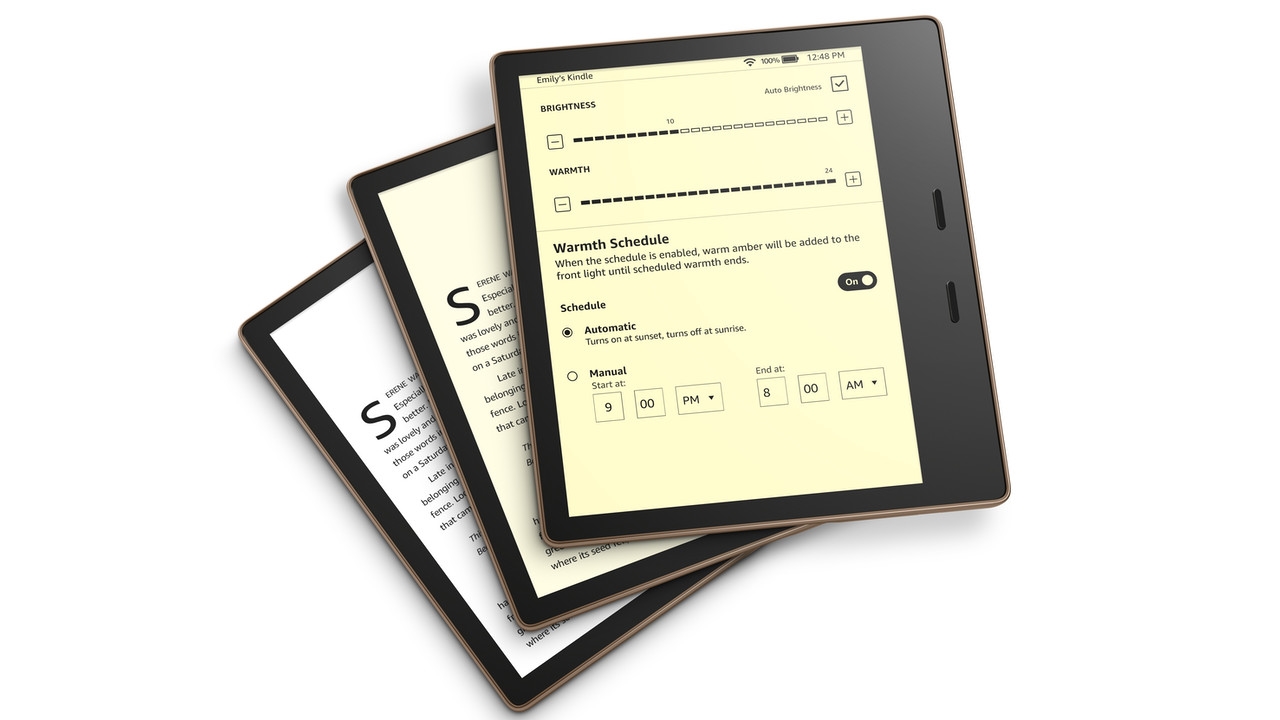
1. Kindle Oasis
For a luxurious reading experience
Screen size: 7-inch | Screen type: Carta E Ink | Storage: 8GB/32GB | Resolution: 300ppi | Weight: 188g | Front light: Yes | Touchscreen: Yes | Wi-Fi: Yes | 4G: Yes | Battery life: up to six weeks
If money is no object and you want the most luxurious reading experience a digital ebook reader can give you, then it doesn't get any better than the 2019 version of Amazon's Kindle Oasis.
While the older 2018 model is also still available on Amazon, the new model is lighter than its predecessor, and its IPX8 waterproofing means it can easily handle an accidental dunk in the bath or the pool.
The backlight can be adjusted from white to warmer yellow hues to reduce eye strain, and it can even be scheduled to become warmer at bedtime (say, 9:30pm for example).
There's also the usual Kindle Oasis features we saw in the previous generation – a high-quality and large 7-inch display with E Ink technology that makes words on the page crisp and clear, and a 'ridge' on one side of the sleek-looking aluminium chassis that has been designed for easy and comfortable single-hand use.
The buttons to turn pages are within easy reach for the thumb even if you have small mitts, and the device can be turned upside down for use with either hand, with the pages swapping automatically to suit.
WhisperSync support means you can stop reading on your Oasis and pick up reading where you left on the Kindle app, or another Kindle device, although this will require your devices to be on the same Wi-Fi network.
There's also plenty of storage space onboard, with 8GB being the starting point, but you can get a 32GB version of the Oasis if you've got (or planning on having) a large digital library. The base model comes with Wi-Fi enabled, but there is an LTE option as well, which allows you to download ebooks from the Kindle Store no matter where you are.
It's the ereader that comes with all the bells and whistles, if you can stomach the premium price.
Read the full review: Amazon Kindle Oasis
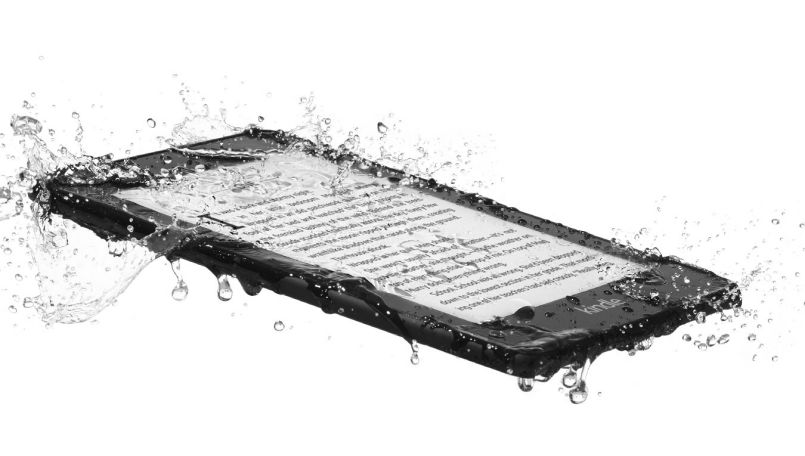
2. Kindle Paperwhite
A great budget option
Screen size: 6-inch | Screen type: E ink | Storage: 4GB | Resolution: 300ppi | Weight: 209g | Front light: yes | Touchscreen: yes | Wi-Fi: yes | 3G: yes | Battery life: up to six weeks
There was a time when Amazon had a Kindle called Voyage, but that has been discontinued. Instead, some of the features from the Voyage have been added to the Kindle Paperwhite, making it one of the best, affordable Kindles till date.
The new Paperwhite is thinner and lighter than the previous generation, and offers 8GB of storage on its base model – twice that on the predecessor. Like the Oasis, though, you can opt for a 32GB flavour as well, in case you'd like to store a staggering number of ebooks on the device. And, like the Oasis, there are Wi-Fi and 4G models available too.
The 6-inch screen is a gorgeous HD display with 300ppi pixel density that makes the words on the page appear sharp and clear, even in bright sunlight. The built-in light can be adjusted from white to warmer hues to reduce eye strain, although you can't schedule the light to change for nighttime reading as you can with the Oasis.
Compared to the Oasis' sleek, premium design, the Paperwhite's chassis is rather boring and feels plasticky in the hand, but it's remarkably functional, as long as you don't need need to use it with a single hand.
Thanks to its IPX8 waterproofing, you can safely relax in the bath or lounge by the pool with your favourite titles and not worry about it falling into the water.
Battery life doesn't seem to be as good as it was in the older version, but you'll still get days of use out a single charge with the current model of the Paperwhite.
Read the full review: Amazon Kindle Paperwhite

3. Amazon Kindle (2019)
For the budget-conscious
Screen size: 6-inch | Screen type: Carta E Ink | Storage: 8GB | Resolution: 167ppi | Weight: 174g | Front light: yes | Touchscreen: yes | Wi-Fi: yes | 3G: no | Battery life: up to four weeks
These are unprecedented times and everyone is budget conscious at the moment. So if you'd like an ereader that won't burn a hole in your pocket, then Amazon's latest Kindle is for you.
It retails for AU$139 a pop, but you get what you pay for. It's an entry-level, no-frills device that comes with a backlight that has no blue light filter. The 6-inch display is glare-free but it's not the sharpest screen available on the Kindle range.
That said, the screen is adequate for reading indoors, the battery will see you through a couple of weeks of reading and you'll get up to 8GB of storage. The Kindle isn't waterproof, so you'll need to be careful if you're a poolside, beach or in-the-bath reader.
For a basic ereader, the latest iteration of the Kindle comes with Bluetooth support, so you can connect a set of wireless headphones and link your Audible account if you're keen on listening to audiobooks when you're unable to read.
The user interface is basic but intuitive and makes reading digital books and magazines a breeze. It's also slim and light, making it a highly portable library for all the titles you own.
Read the full review: Amazon Kindle
Kobo ereaders
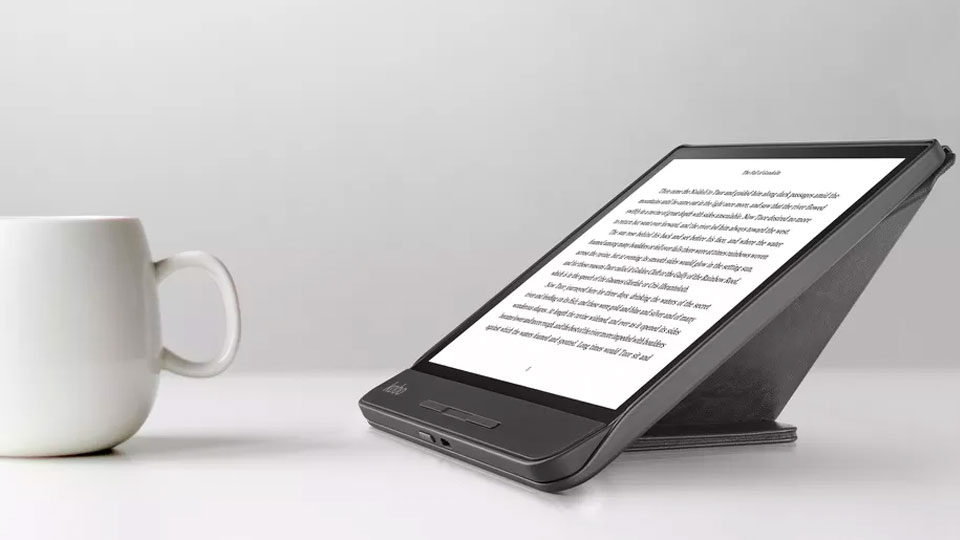
1. Kobo Forma
The big-screen advantage
Screen size: 8-inch | Screen type: Carta E Ink | Storage: 8GB | Resolution: 300ppi | Weight: 197g | Front light: yes | Touchscreen: yes | Wi-Fi: yes | 3G: no | Battery life: 7-8 weeks
The Forma is Kobo's answer to the Kindle Oasis, albeit with a much steeper price tag. Like it's Amazon competition, the Forma has an asymmetrical design that's meant to make prolonged one-handed holding comfortable. Where the Forma one-ups the Kindle – and perhaps attempts to justify its AU$30 price premium over the AU$399 Oasis – is by adding an extra inch to the display, for an expansive 8-inches in total.
Despite the size disparity, both premium ereaders have similar weights, although the Forma's plastic body tends to lose its shiny look over time and use. But while the Oasis’ metal exterior certainly feels more durable, it's also much more slippery. The Forma's rubbery and textured back, on the other hand, means that despite its bigger size your grip never wavers and its bigger footprint helps keep that weight feel more evenly distributed.
You can hold the Forma in either your left or right hand (or even in landscape) and the display orientation automatically rotates within a couple of seconds of switching. And it’s clear the Forma uses newer and snappier E Ink tech than Kobo’s previous flagship device, the Aura One, with full screen refreshes required less often and a touch more responsiveness when turning pages or using the onscreen keyboard. It’s fast.
As is common with all Kobo devices from the last few years, the Forma's backlight also offers colour-temperature adjustment, so you can opt for an orangey-yellow light tone rather than the standard (and potentially sleep-disrupting) blue light, which can even be scheduled.
Unlike the Oasis, though, there's only a single 8GB version of the Forma available but it's the reading experience that ultimately counts. The Forma undoubtedly shines in that regard: it’s asymmetrical design and large screen do undeniably make it more comfortable to use for long periods, and it's user interface has a lot more features than the Kindle alternatives, particularly when it comes to organising your library.
Another advantage to using a Kobo ereader is OverDrive support, which allows users to borrow books from their local libraries – and most of the libraries in Australia allow you to do so. So if you’re an ebook junkie looking for an ereader that can keep pace, this one’s got the goods.
Read the full review: Kobo Forma
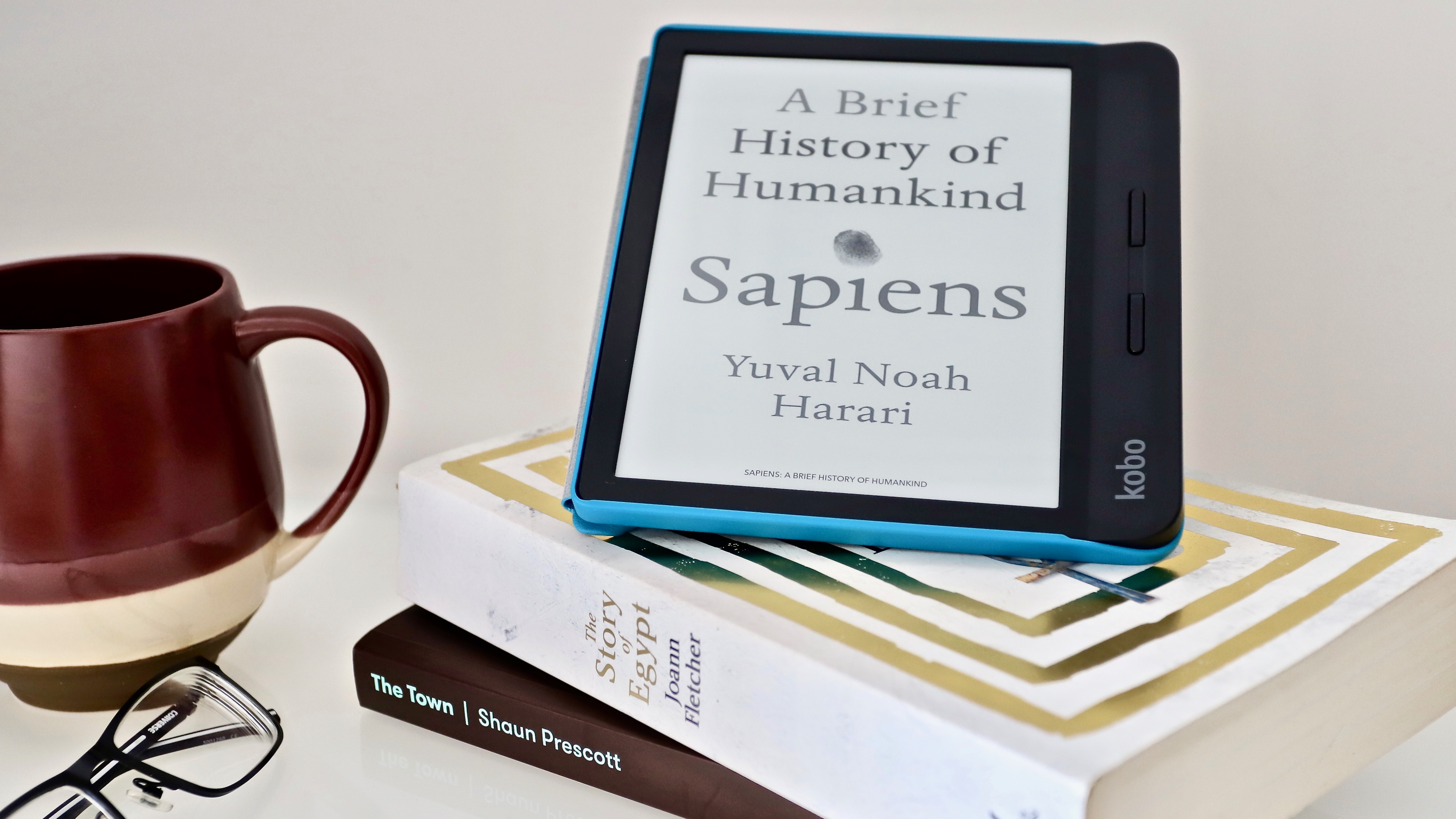
2. Kobo Libra H2O
Premium reading experience for an affordable price
Screen size: 7-inch | Screen type: Carta E Ink | Storage: 8GB | Resolution: 300ppi | Weight: 192g | Front light: yes | Touchscreen: yes | Wi-Fi: yes | 3G: no | Battery life: up to six weeks
While traditional tablet-like ereaders (like the Kindle Paperwhite mentioned above and the Kobo Clara HD below) are the most affordable ebook readers you can get, they're difficult to use single-handed. And so the asymmetric design that the Kindle Oasis pioneered is becoming more popular, with Kobo introducing the Libra H2O in late 2019 as a more affordable option to both the Amazon counterpart as well as the bigger Kobo Forma.
But it's not just the Libra's relatively affordable price tag that makes it a compelling ereader alternative – it's also more durable than the expensive bigger brother listed above and it boasts an improved user interface that offers a better reading experience than what you'd get on a Kindle.
With a 7-inch screen (compared to the Forma's 8 inches), it's smaller than it's bigger brother, but that makes it more portable and it's a much faster device besides. With the latest E Ink technology, the Libra H2O matches the Oasis in speed and responsiveness – whether you're just turning a page, selecting words for dictionary look-up or entering a Wi-FI password to set up the ereader.
The Libra H2O debuts improvements to the user interface, like a new ebook navigator accessed by either swiping upward from the bottom or tapping in the centre of the screen. You can even use the Libra to read in landscape mode if you prefer, something you won't be able to with the Oasis. We were already partial to Kobo's user interface and these changes have made it more streamlined than the cluttered UX of the Kindles.
Thanks to its hard plastic body, the Libra has a more premium and rugged look than the Forma. The page-turn buttons feel a lot more sturdy with good feedback, while the power button on the rear is easy to locate as it sits in a recess that's quite deep. That said, the buttons on the Oasis are, by far, the best of the three.
And while the Oasis' metal body gives it a very premium look and feel – and carries a price tag to match its status – the Libra's affordability (at AU$249 apiece) and usability makes it easy to recommend – especially in Australia where OverDrive support means you can borrow ebooks from you local public library.
Read the full review: Kobo Libra H2O
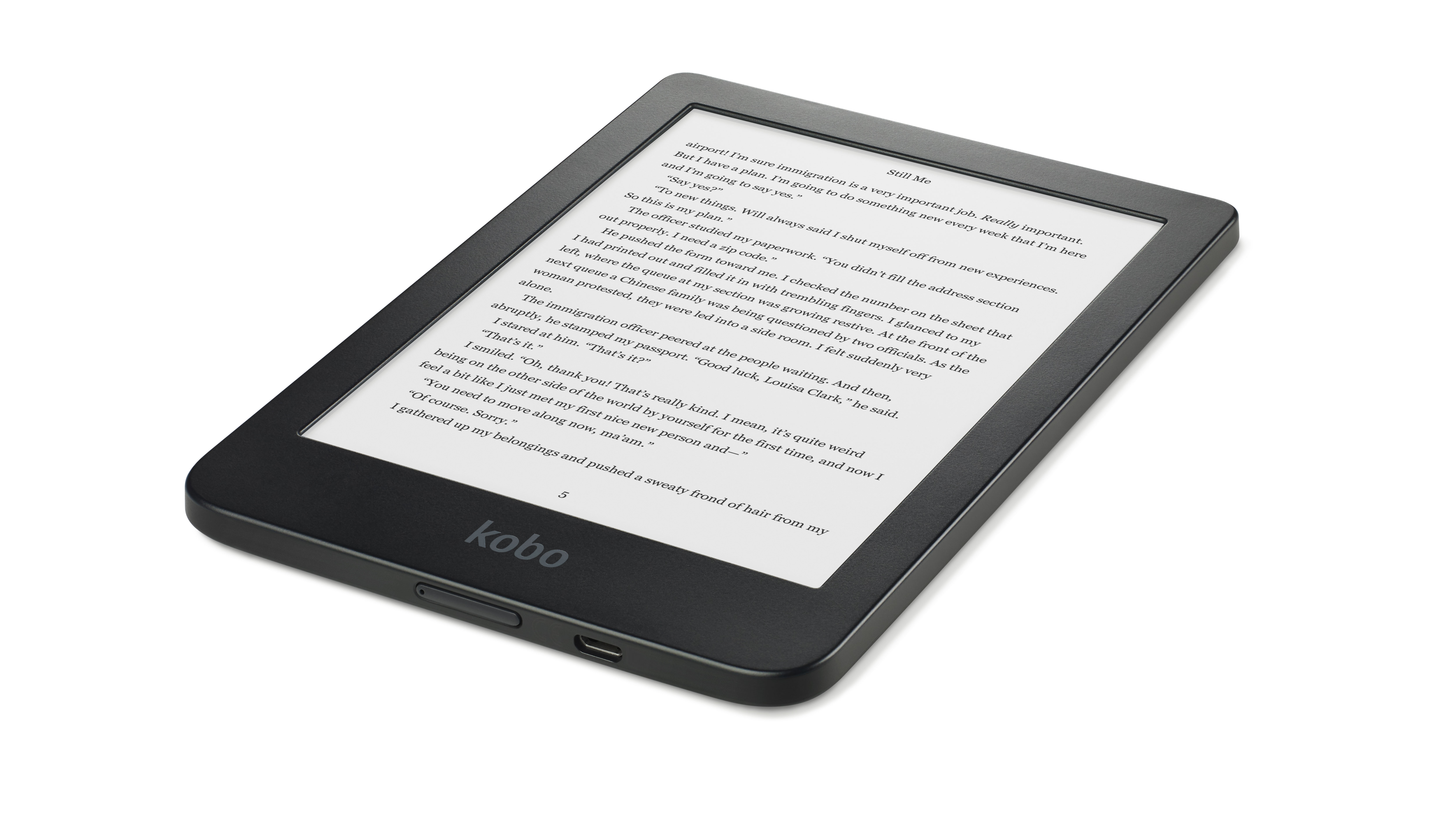
3. Kobo Clara HD
Kobo's Paperwhite rival
Screen size: 6-inch | Screen type: Carta E Ink | Storage: 8GB | Resolution: 300ppi | Weight: 166g | Front light: yes | Touchscreen: yes | Wi-Fi: yes | 3G: no | Battery life: up to 8 weeks
Kobo's Clara HD ereader is more than capable of giving its direct competition – Amazon's Kindle Paperwhite – a run for its money. Priced cheaper than its Kindle counterpart, the Clara HD manages to outperform Amazon's most popular ereader in almost every area that matters.
Key among those is the screen. The Clara HD's 6-inch front-lit display matches the Kindle for sharpness (both are 300ppi) but integrates a blue-light filter which uses your timezone to automatically change screen brightness at night to reduce your exposure to sleep-disrupting blue light. It fits that display into a compact body that's lighter than the Paperwhite, making it easier to slip into just about any bag.
Cover art and text are rendered at a higher DPI (dots per inch) on the Clara HD than other older Kobo ereaders, making them appear significantly sharper in comparison. The Clara HD also introduces a new 'rapid page turn' engine which allows you to quickly move forward in an ebook by holding down the bottom left corner of the screen. The slight caveat is that this feature only works with KEPUB ebooks, i.e. the ones bought directly from Kobo.
The responsiveness of the new E-Ink screen was also much faster and more precise than we're used to seeing on either Kindle or Kobo ereaders, which makes things like text selection for dictionary lookup (or highlighting and note-taking) much less hit-and-miss than before. It also has wireless OverDrive functionality, so you can browse and borrow from your local library's ebook collection directly on the device.
With battery life that lasts a few weeks, the Clara HD is a feature-packed device with a display that's the best-in-class for an ereader at this price point.
Read the full review: Kobo Clara HD
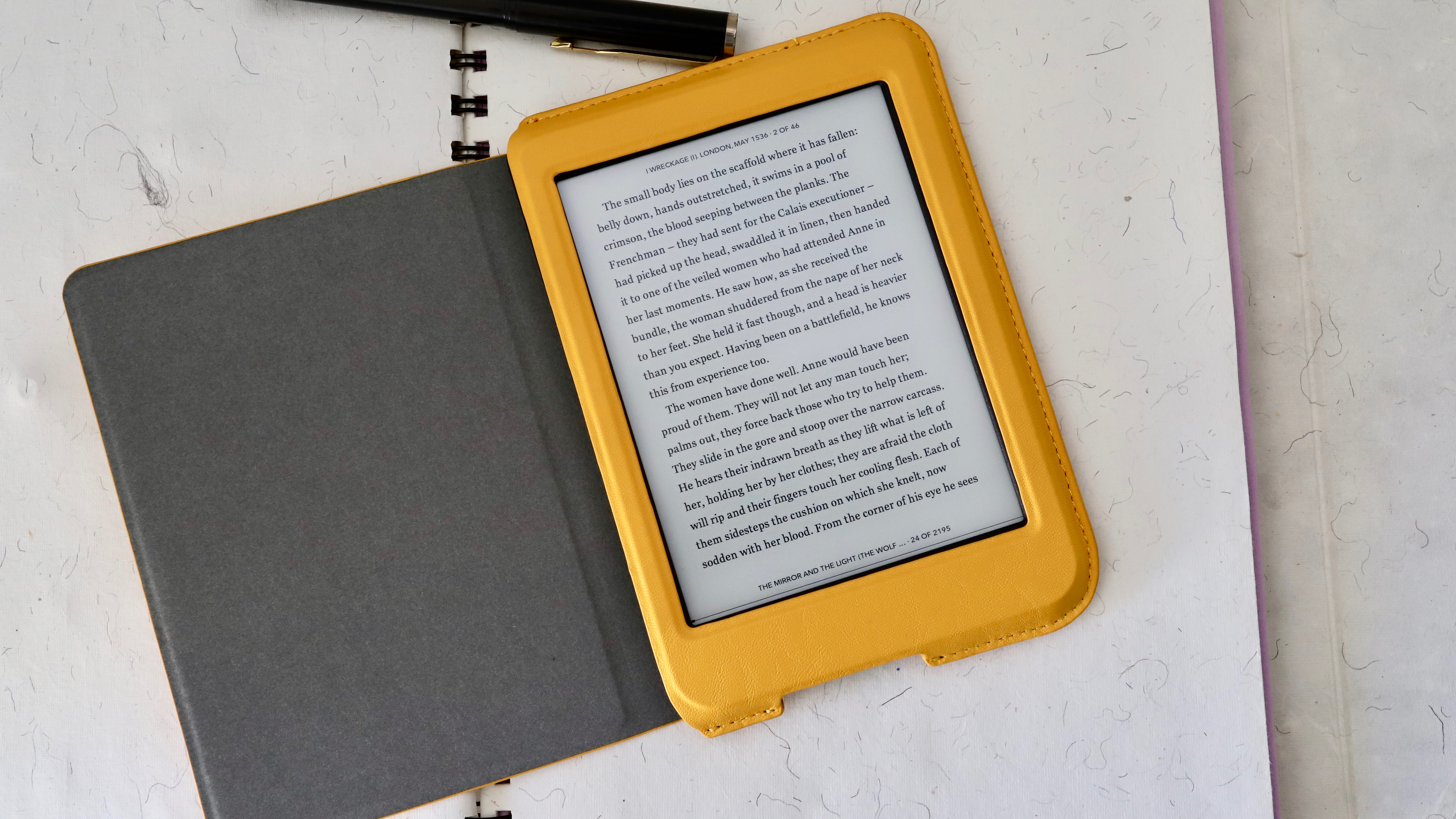
4. Kobo Nia
The basic Kindle rival with a higher resolution screen
Screen size: 6-inch | Screen type: Carta E Ink | Storage: 8GB | Resolution: 212ppi | Weight: 172g | Front light: yes | Touchscreen: yes | Wi-Fi: yes | 3G: no | Battery life: Up to four weeks
Announced in July 2020, the Nia is the latest ereader to join the Kobo ranks. It's the cheapest Kobo model, a no-frills device that offers direct competition to the basic Amazon Kindle. While it's priced a touch higher than the Kindle, you do get a slightly better and more responsive 6-inch screen, with a resolution of 1024x758, or 212ppi (a step-up from the 167ppi Kindle display).
You also get a more streamlined user interface which, over the last couple of years, has seen steady improvements. The new features that debuted last year on the Libra H2O have made their way to the Nia, making it a lot more user-friendly than any Kindle model.
The other advantages the Nia offers over the Kindle are wider file format support (like all the Kobos) and third-party application integration with OverDrive for borrowing library ebooks, Pocket for reading on the web and Dropbox for cloud storage. Like the other Kobos, you'll be able to sideload fonts to the Nia, even Amazon's own Bookerly.
Physically, the Kindle and the Nia are similar but the Kobo device has a textured rear panel which makes the ereader feel more secure in the hand. The one complaint we do have is, for a device that launched in 2020, it still doesn't have USB-C charging.
Unlike the Kindle, there's no Bluetooth support on the Nia – a commonality shared by all the Kobo ereaders, even the premium ones. That means the Nia lacks audiobook support, which even the base model of the current Kindle range has.
So, if you're not keen on getting locked into the Amazon ecosystem, then the Nia is an excellent ereader for anyone on a tight budget. However, the Nia lacks a blue light filter, so if you read a lot at night, we think the Kobo Clara HD is a better option – with a sharper 300ppi screen – if you can spare the extra AU$40 for it.
Read the full review: Kobo Nia
- Interested in getting a new ereader? Compare the latest prices of ebook readers in Australia on our sister site Getprice.
Kindle vs Kobo
Kindle vs Kobo: which ereader should you buy?
With not much competition from other brands, Australians have a simpler catalogue of ereaders to choose from. The only ones we can get Down Under are Kindles and Kobos, so which one is best for avid readers in Australia?
It boils down to price and feature set. Both Amazon and Kobo have premium offerings in the Kindle Oasis and the Forma respectively, but there are budget ones as well. The Paperwhite and the Clara HD are excellent in their own way, with the Libra H2O offering an excellent middle path. However, Kobo holds a trump card for most Aussies.
Borrowing books
All Kobo ereaders have OverDrive support, meaning anyone with a public library membership in Australia can borrow ebooks from their local library. Most public libraries in Australia now allow members to borrow ebooks, saving you plenty of dosh in the long term on purchasing books.
That said, Amazon does offer a subscription service called Prime Reading – available for free to all Amazon Prime members. There's over a thousand titles to choose from, but you won't own the books you read via the Prime Reading service.
If you're keen on owning all the books you read, then the Kindle Store usually has way more titles on offer than the Kobo Store, but Kobo's Super Points system allows you to save points you earn on purchases for later use.
File support
Another thing to keep in mind when choosing an ereader is the support for different file types. All Kindle ebooks you purchase from Amazon will be in .azw format, although the ereaders will also support .mobi files too. There is no .epub support here and you will need to use a tool like Calibre to convert .epubs to a supported file (either .azw or .mobi).
Kobos, on the other hand, will support most file types – with the exception of Amazon's own .azw of course. You'll even be able to read PDFs on your Kobo device.
Fonts
You'll find that the Kindles have some customs fonts designed by Amazon, with Bookerly and Ember being the most popular ones. However, you can't sideload more fonts – you're stuck using the ones Amazon has provided on the device which, to be fair, are great. While Kobo devices have their own set of default fonts, you can, in fact, sideload more – including any Amazon custom fonts like Bookerly.
Audiobooks
While the Kobo Store has a large number of audiobooks, you can't listen to them on any of the company's ereaders – not even the expensive Forma. For that, you'll need to download the Kobo app on your smartphone or tablet.
However, all the latest iterations of the Kindle devices (Kindle 8th Gen, Kindle Oasis 8th and 9th Gen, Kindle Paperwhite 10th Gen) have Bluetooth connectivity for wireless headphones and audiobook support for anything you get from Audible.
External app support
Goodreads is a great social platform for avid readers and, ever since Amazon acquired the company, there's seamless integration with Kindle devices available on the ereaders. It's a great and easy way to keep tabs on your library. However, integration with other platforms on Kindle devices stops there.
Other than OverDrive support to borrow library books, Kobo also has a partnership with Dropbox. If you happen to have your library saved in a Dropbox folder, you can easily connect the two and transfer files to the device without needing to plug the ereader into your computer.
Then there's Pocket support on the Kobo devices as well. This app allows you to read long-form articles that you save for later, and syncing with your Pocket account will give you access to them all on your Kobo ereader.
So, which one should you buy?
There are some differences between the two platforms when it comes to the user interface as well – the main being the ability to organise your library on the device. While you can create folders and collections on both Kindle and Kobo devices, you can only organise ebooks you've purchased from the Kindle Store on an Amazon device. If you've added books you've purchased from elsewhere, they will sit in the main library but you will not be able to move them to a folder.
On the other hand, everything you have stored on your Kobo device can be organised as you see fit.
Pretty much everything else about the two platforms is competitive, including pricing, so the choice of device ultimately rests on whether you'd like to borrow library books or if you're a Prime member, what file format the vast majority of your existing library is, and whether you'd like to listen to audiobooks when you're not reading.
At the end, you won't go wrong with either a Kindle or a Kobo, with both offering their own set of pros and cons.
from TechRadar - All the latest technology news https://ift.tt/2NgD5z6
No comments:
Post a Comment